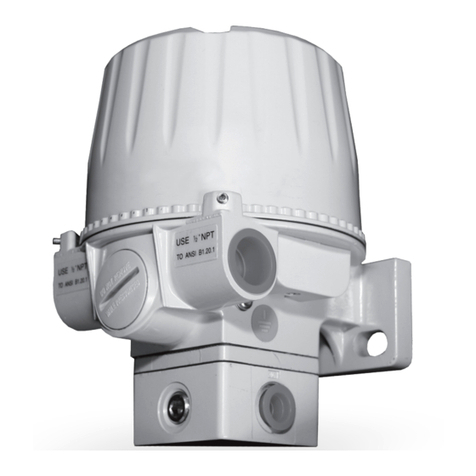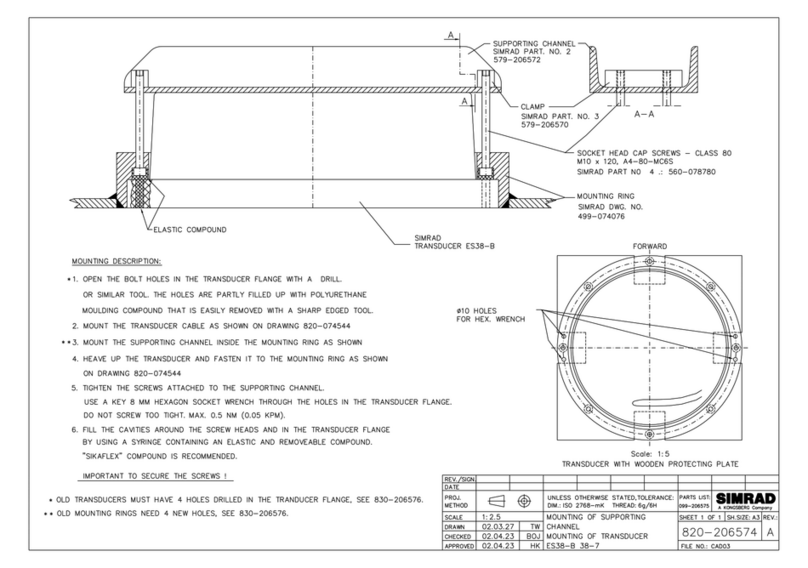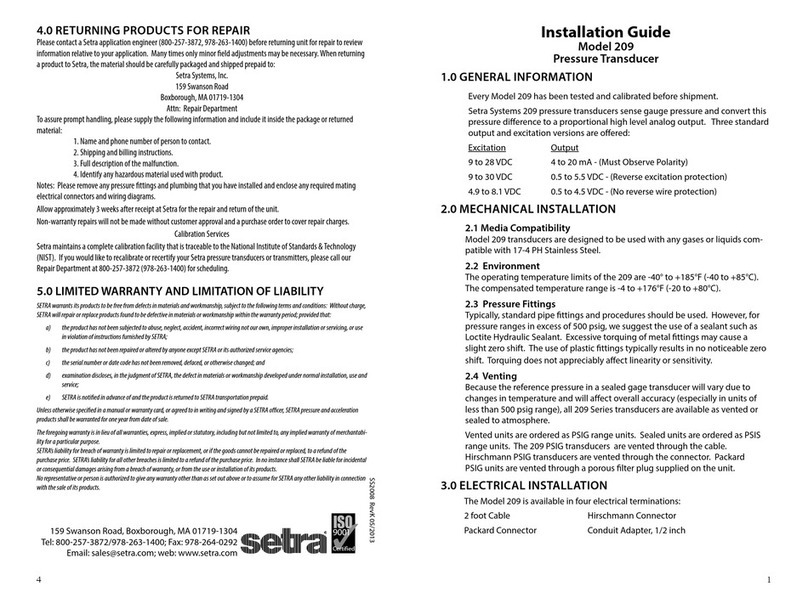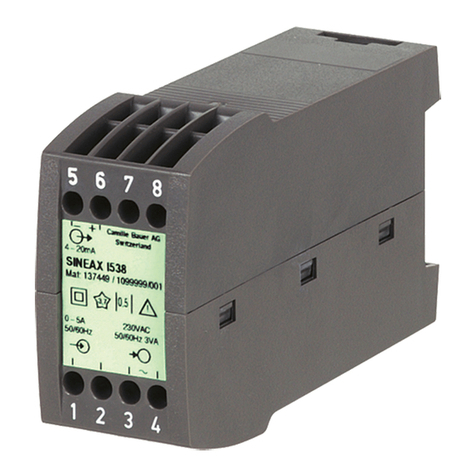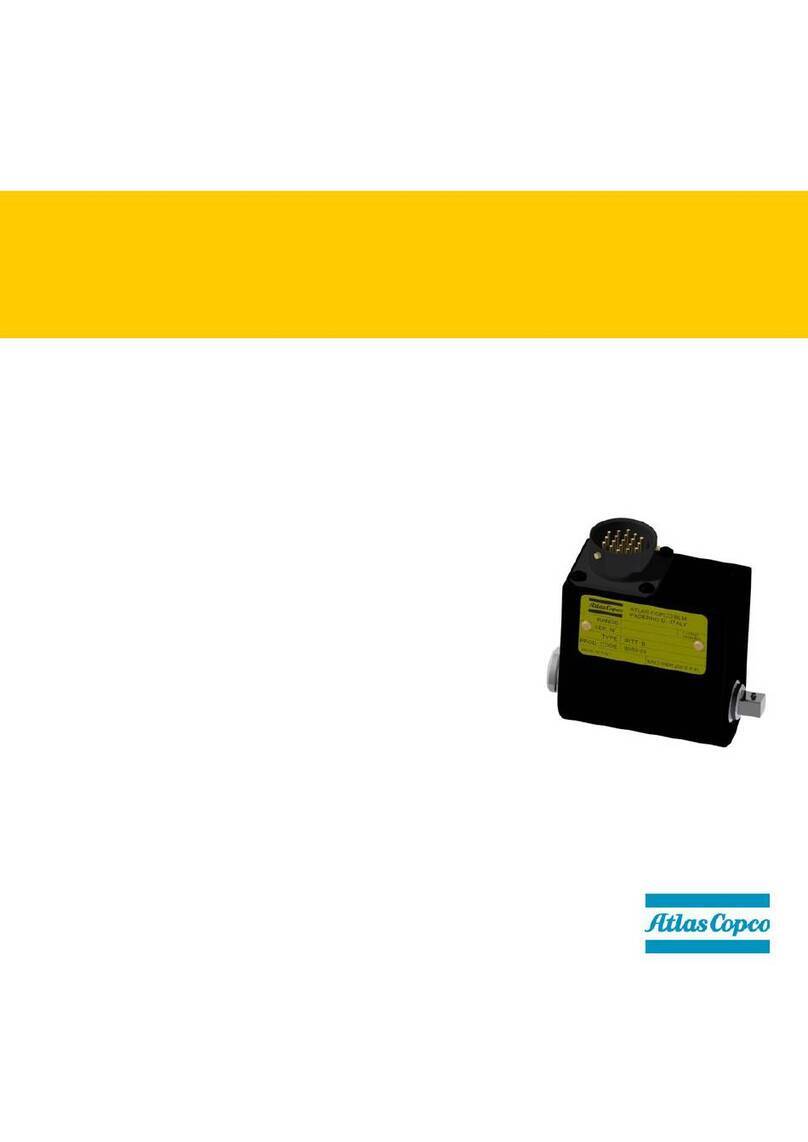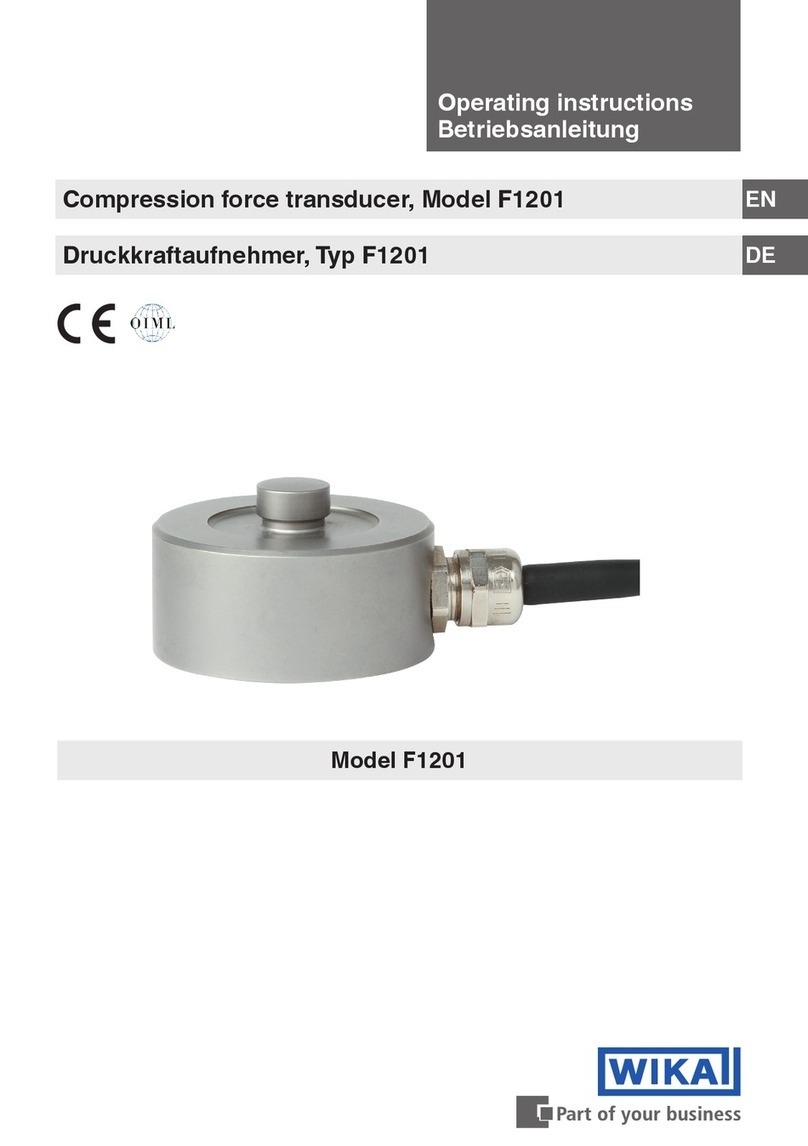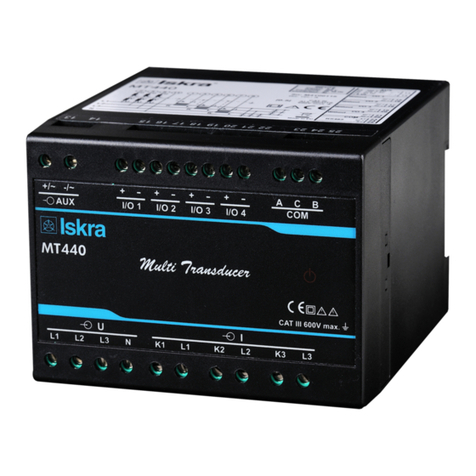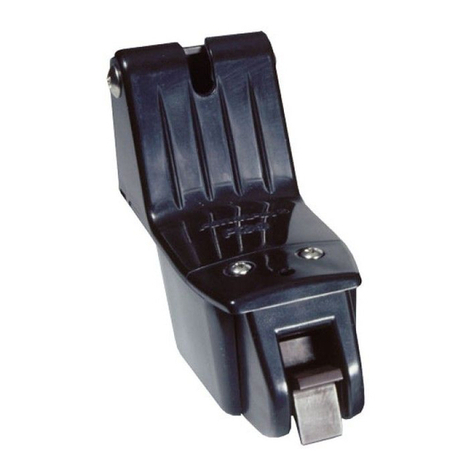GE Oil & Gas T5 User manual

DigitalFlow - Flare
Flare Transducer Options
Option Code
Description
T5 – B – C – D – E – F – G – H
T5 Transducer
A - Model
T5
All welded gas transducer, Certifications include: ATEX Flameproof
II 2 GD Ex d IIC T(x); CSA/C-US Class 1, Div. 1, Groups C, D; IECEx
Flameproof Ex d IIC T(x)
B - Head Angle
18
Straight head, 180 deg
90
90 deg head angle
45
45 deg head angle
C - Frequency
10
100 KHz frequency
D - Tube Length
<>
Replace <> with Standard length Shown Below.
Note- Enter D for factory calculated length. Standard lengths are
available for 90 degree and 180 degree head angles
Note-90 Degree head angle has the following standard lengths: 37,
41, 45 and 49 inches
Note-180 degree head angle has the following standard lengths: 16,
33 and 36 inches
Note-For Special lengths consult the factory
E - Temperature Range
NT
Normal Range: -55 to 150 deg C (-67 to 302 deg F)
HT
High Temperature Range: -50 to 250 deg C (-58 to 482 deg F)
LT
Low temperature range: -220 to 100 deg C (-364 to 212 deg F)
F - Material
TI
Standard titanium head with titanium tube. Material certs per
EN10204 Type 3.1 The transducer material also meets the
requirements of NACE MR-01-75 and MR-01-03
Note- Other materials may be available. Contact Applications
engineering. Some alternate materials are Monel, Hastelloy C.
G - Junction Box
0
No enclosure (select if no Preamp is Required for Transducer
Replacement)
1
Explosion proof Aluminum Enclosure
2
Explosion proof 316 SS enclosure
Page 207 of 578
GE
Oil & Gas

DigitalFlow - Flare
Flare Transducer Options
Option Code
Description
T5 – B – C – D – E – F – G – H
T5 Transducer
H - XAMP
0
no XAMP (Field Replacement Only)
1
XAMP with transformer (for Standard and Extended Range operation)
2
XAMP without transformer (for special applications; contact factory
for details)
I - Preamp Gain
0
Gain of Zero - No Preamplifier Required
1
Gain of 10
2
Gain of 20 (Standard for 100kHz)
J - Certification
1
USA/CAN for Div 1,Class 1, Group C & D hazardous locations
2
ATEX II 2 G (KEMA 01ATEX2045 X) Ex d IIC T6...T2 Gb hazardous
locations
3
IECEx (IECEx KEM09.0009X) Ex d IIC T6...T2 Gb hazardous locations
4
InMetro Certification
5
USA/CAN for Div 1,Class 1, Group B, C & D hazardous locations
Z - Miscellaneous
0
None
S
Special Consult Factory
Note- Prices shown are “each.” All T5 Transducers MUST be ordered
in Pairs
916-117 Rev. E
October 2016
GE
Oil & Gas

GE
Oil & Gas Flow
916-117 Rev. E
October 2016
T5 Flare Gas Transducer
(Standard and Extended Velocity Range)
Installation Guide

www.gemeasurement.com
©2016 General Electric Company. All rights reserved.
Technical content subject to change without notice.
GE
Oil & Gas
T5 Flare Gas Transducer
(Standard and Extended Velocity Range)
Installation Guide
916-117 Rev. E
October 2016

ii
[no content intended for this page]

T5 Flare Gas Transducer Installation Guide iii
Preface
Information Paragraphs
Note: These paragraphs provide information that provides a deeper understanding of the situation, but is not
essential to the proper completion of the instructions.
IMPORTANT: These paragraphs provide information that emphasizes instructions that are essential to proper setup of
the equipment. Failure to follow these instructions carefully may cause unreliable performance.
Safety Issues
Auxiliary Equipment
Local Safety Standards
The user must make sure that he operates all auxiliary equipment in accordance with local codes, standards,
regulations, or laws applicable to safety.
Working Area
CAUTION! This symbol indicates a risk of potential minor personal injury and/or severe damage to
the equipment, unless these instructions are followed carefully.
WARNING! This symbol indicates a risk of potential serious personal injury, unless these instructions
are followed carefully.
WARNING! It is the responsibility of the user to make sure all local, county, state and national codes,
regulations, rules and laws related to safety and safe operating conditions are met for each
installation.
WARNING! For installations in potentially hazardous areas, be sure to read the Certification and
Safety Statements document at the end of this manual before beginning the installation.
WARNING! Auxiliary equipment may have both manual and automatic modes of operation. As
equipment can move suddenly and without warning, do not enter the work cell of this equipment
during automatic operation, and do not enter the work envelope of this equipment during manual
operation. If you do, serious injury can result.
WARNING! Make sure that power to the auxiliary equipment is turned OFF and locked out before
you perform maintenance procedures on the equipment.

Preface
iv T5 Flare Gas Transducer Installation Guide
Qualification of Personnel
Make sure that all personnel have manufacturer-approved training applicable to the auxiliary equipment.
Personal Safety Equipment
Make sure that operators and maintenance personnel have all safety equipment applicable to the auxiliary equipment.
Examples include safety glasses, protective headgear, safety shoes, etc.
Unauthorized Operation
Make sure that unauthorized personnel cannot gain access to the operation of the equipment.
Environmental Compliance
Waste Electrical and Electronic Equipment (WEEE) Directive
GE Measurement & Control is an active participant in Europe’s Waste Electrical and Electronic Equipment (WEEE)
take-back initiative, directive 2012/19/EU.
The equipment that you bought has required the extraction and use of natural resources for its production. It may
contain hazardous substances that could impact health and the environment.
In order to avoid the dissemination of those substances in our environment and to diminish the pressure on the natural
resources, we encourage you to use the appropriate take-back systems. Those systems will reuse or recycle most of the
materials of your end life equipment in a sound way.
The crossed-out wheeled bin symbol invites you to use those systems.
If you need more information on the collection, reuse and recycling systems, please contact your local or regional
waste administration.
Visit https://www.gemeasurement.com/environmental-health-safety-ehs for take-back instructions and more
information about this initiative.

T5 Flare Gas Transducer Installation Guide v
Contents
Chapter 1. Installing Pipe Nozzles
1.1 Introduction. . . . . . . . . . . . . . . . . . . . . . . . . . . . . . . . . . . . . . . . . . . . . . . . . . . . . . . . . . . . . . . . . . . . . . . . . . . . . . . . . . . . . . . . . . . .1
1.2 Bias 90° Installation . . . . . . . . . . . . . . . . . . . . . . . . . . . . . . . . . . . . . . . . . . . . . . . . . . . . . . . . . . . . . . . . . . . . . . . . . . . . . . . . . . . .1
1.2.1 Identifying and Checking the Nozzle Installation Kit Components . . . . . . . . . . . . . . . . . . . . . . . . . . . . . . . . .2
1.2.2 Selecting and Marking the Pipe for Nozzle Locations. . . . . . . . . . . . . . . . . . . . . . . . . . . . . . . . . . . . . . . . . . . . . .4
1.2.3 Installing the First Welding Boss . . . . . . . . . . . . . . . . . . . . . . . . . . . . . . . . . . . . . . . . . . . . . . . . . . . . . . . . . . . . . . . . .8
1.2.4 Installing the First Nozzle . . . . . . . . . . . . . . . . . . . . . . . . . . . . . . . . . . . . . . . . . . . . . . . . . . . . . . . . . . . . . . . . . . . . . . . .9
1.2.5 Installing the Second Welding Boss . . . . . . . . . . . . . . . . . . . . . . . . . . . . . . . . . . . . . . . . . . . . . . . . . . . . . . . . . . . . .11
1.2.6 Installing the Second Nozzle. . . . . . . . . . . . . . . . . . . . . . . . . . . . . . . . . . . . . . . . . . . . . . . . . . . . . . . . . . . . . . . . . . . .13
1.2.7 Hot Tapping the Pipe. . . . . . . . . . . . . . . . . . . . . . . . . . . . . . . . . . . . . . . . . . . . . . . . . . . . . . . . . . . . . . . . . . . . . . . . . . .14
1.2.8 Cold Tapping the Pipe . . . . . . . . . . . . . . . . . . . . . . . . . . . . . . . . . . . . . . . . . . . . . . . . . . . . . . . . . . . . . . . . . . . . . . . . . .14
1.3 Tilted 45° Installation . . . . . . . . . . . . . . . . . . . . . . . . . . . . . . . . . . . . . . . . . . . . . . . . . . . . . . . . . . . . . . . . . . . . . . . . . . . . . . . . . .15
1.3.1 Identifying and Checking the Nozzle Installation Kit Components . . . . . . . . . . . . . . . . . . . . . . . . . . . . . . . .15
1.3.2 Selecting and Marking the First Nozzle Location . . . . . . . . . . . . . . . . . . . . . . . . . . . . . . . . . . . . . . . . . . . . . . . . .16
1.3.3 Determining and Marking the Second Nozzle Location. . . . . . . . . . . . . . . . . . . . . . . . . . . . . . . . . . . . . . . . . . .18
1.3.4 Installing the First Welding Boss . . . . . . . . . . . . . . . . . . . . . . . . . . . . . . . . . . . . . . . . . . . . . . . . . . . . . . . . . . . . . . . .21
1.3.5 Installing the First Nozzle . . . . . . . . . . . . . . . . . . . . . . . . . . . . . . . . . . . . . . . . . . . . . . . . . . . . . . . . . . . . . . . . . . . . . . .23
1.3.6 Installing the Second Welding Boss and Nozzle. . . . . . . . . . . . . . . . . . . . . . . . . . . . . . . . . . . . . . . . . . . . . . . . . .25
1.3.7 Hot Tapping the Pipe. . . . . . . . . . . . . . . . . . . . . . . . . . . . . . . . . . . . . . . . . . . . . . . . . . . . . . . . . . . . . . . . . . . . . . . . . . .26
1.3.8 Cold Tapping the Pipe . . . . . . . . . . . . . . . . . . . . . . . . . . . . . . . . . . . . . . . . . . . . . . . . . . . . . . . . . . . . . . . . . . . . . . . . . .26
Chapter 2. Installing the Isolation Valves
2.1 Bias 90° Installation (Standard or Extended Velocity Range) . . . . . . . . . . . . . . . . . . . . . . . . . . . . . . . . . . . . . . . . . . . . .27
2.1.1 For 3 inch Flanges . . . . . . . . . . . . . . . . . . . . . . . . . . . . . . . . . . . . . . . . . . . . . . . . . . . . . . . . . . . . . . . . . . . . . . . . . . . . .27
2.1.2 For 2 inch Flanges . . . . . . . . . . . . . . . . . . . . . . . . . . . . . . . . . . . . . . . . . . . . . . . . . . . . . . . . . . . . . . . . . . . . . . . . . . . . .27
2.2 Tilted 45° Installation (Standard Velocity Range). . . . . . . . . . . . . . . . . . . . . . . . . . . . . . . . . . . . . . . . . . . . . . . . . . . . . . . . .27
2.2.1 For 3 inch Flanges . . . . . . . . . . . . . . . . . . . . . . . . . . . . . . . . . . . . . . . . . . . . . . . . . . . . . . . . . . . . . . . . . . . . . . . . . . . . .27
2.2.2 For 2 inch Flanges . . . . . . . . . . . . . . . . . . . . . . . . . . . . . . . . . . . . . . . . . . . . . . . . . . . . . . . . . . . . . . . . . . . . . . . . . . . . .27
2.3 Tilted 45° Installation (Extended Velocity Range) . . . . . . . . . . . . . . . . . . . . . . . . . . . . . . . . . . . . . . . . . . . . . . . . . . . . . . . .28

Contents
vi T5 Flare Gas Transducer Installation Guide
Chapter 3. Installing the Transducer Assemblies
3.1 Introduction. . . . . . . . . . . . . . . . . . . . . . . . . . . . . . . . . . . . . . . . . . . . . . . . . . . . . . . . . . . . . . . . . . . . . . . . . . . . . . . . . . . . . . . . . . .31
3.2 Using the Low-Pressure Insertion Mechanism . . . . . . . . . . . . . . . . . . . . . . . . . . . . . . . . . . . . . . . . . . . . . . . . . . . . . . . . . .31
3.2.1 Preparing for Installation. . . . . . . . . . . . . . . . . . . . . . . . . . . . . . . . . . . . . . . . . . . . . . . . . . . . . . . . . . . . . . . . . . . . . . .31
3.2.2 Mounting the Insertion Mechanism . . . . . . . . . . . . . . . . . . . . . . . . . . . . . . . . . . . . . . . . . . . . . . . . . . . . . . . . . . . . .32
3.3 Mounting the Bias 90 Insertion Mechanism/Transducer Assembly . . . . . . . . . . . . . . . . . . . . . . . . . . . . . . . . . . . . . . .36
3.4 Inserting the Bias 90 Transducer into the Pipe . . . . . . . . . . . . . . . . . . . . . . . . . . . . . . . . . . . . . . . . . . . . . . . . . . . . . . . . . .39
3.5 Aligning the Transducers (Standard Velocity Range). . . . . . . . . . . . . . . . . . . . . . . . . . . . . . . . . . . . . . . . . . . . . . . . . . . . .42
3.6 Aligning the Transducers (Extended Velocity Range) . . . . . . . . . . . . . . . . . . . . . . . . . . . . . . . . . . . . . . . . . . . . . . . . . . . .42
3.7 Mounting the Tilted 45 Insertion Mechanism/Transducer Assembly . . . . . . . . . . . . . . . . . . . . . . . . . . . . . . . . . . . . . .46
3.8 Inserting the Tilted 45 Transducer into the Pipe . . . . . . . . . . . . . . . . . . . . . . . . . . . . . . . . . . . . . . . . . . . . . . . . . . . . . . . . .52
3.9 Connecting an XAMP . . . . . . . . . . . . . . . . . . . . . . . . . . . . . . . . . . . . . . . . . . . . . . . . . . . . . . . . . . . . . . . . . . . . . . . . . . . . . . . . . .54
Chapter 4. Specifications
4.1 T5 Transducer Physical Specifications . . . . . . . . . . . . . . . . . . . . . . . . . . . . . . . . . . . . . . . . . . . . . . . . . . . . . . . . . . . . . . . . . .61
4.2 T5 Transducer Certifications . . . . . . . . . . . . . . . . . . . . . . . . . . . . . . . . . . . . . . . . . . . . . . . . . . . . . . . . . . . . . . . . . . . . . . . . . . .61

T5 Flare Gas Transducer Installation Guide 1
Chapter 1. Installing Pipe Nozzles
Chapter 1. Installing Pipe Nozzles
1.1 Introduction
Before the T5 transducers can be installed into the pipe, you will need to install pipe nozzles. Nozzles may be installed
as part of a fabricated spoolpiece or by using the hot or cold tap process with a GE Sensing Nozzle Installation Kit.
IMPORTANT: This procedure only applies if you are using a Nozzle Installation Kit. If you are tapping the pipe
without using a Nozzle Installation Kit, refer to the supplied drawings in your shipment. This procedure
is written and illustrated for installations on horizontal pipes. However, the procedure is the same for
vertical pipe installations.
This section describes how to install nozzles in the following configurations:
1. Bias 90oInstallation
•Standard transducer spacings of 10” and 9”, with both transducers facing straight at each other, are for
applications with gas velocities up to 100 m/s (328 ft/s). This is the standard velocity range.
•A shorter transducer spacing of 6.4”, with only the downstream transducer rotated 6° into the flow is for
applications with gas velocities up to 120 m/s (394 ft/s). This is the extended velocity range.
2. Tilted 45oInstallation
•Standard transducer face to face spacings, with both transducer body axes concentric and parallel to each
other are for applications with gas velocities up to 100 m/s (328 ft/s). This is the standard velocity range.
•A shorter transducer face to face spacing of approximately 7.85”, with only the downstream transducer
tilted 6° into the flow, is for applications with gas velocities up to 120 m/s (394 ft/s). This is the extended
velocity range.
1.2 Bias 90°Installation
This procedure includes the following steps:
•Identifying and checking the nozzle installation kit components
•Selecting and marking the pipe for nozzle locations
•Installing the first welding boss
•Installing the first nozzle
•Installing the second welding boss
•Installing the second nozzle
•Tapping the pipe

Chapter 1. Installing Pipe Nozzles
2T5 Flare Gas Transducer Installation Guide
1.2.1 Identifying and Checking the Nozzle Installation Kit Components
The Nozzle Installation Kit contains the materials listed below. Use Figure 1 below to help identify each component.
•2 Nozzles (if purchased)
•2 Welding bosses
•1 Jig
•1 Alignment plate (9”, 10” or 6.4” spacing)
•1 Spacer flange
•1 Threaded rod (1” diameter), with washer and nut
IMPORTANT: You will need eight 5/8” studs with two nuts each, or 3/4” studs with two nuts each. The 5/8” studs are
needed for 2”-150#, 2”-300# and 3”-150# flanges. The 3/4” studs are needed for 3”-300# flanges.
After you are familiar with each component, verify that the welding bosses and alignment plate shipped are for the
required transducer spacing and the pipe size described in the following steps.
Figure 1: Components for Nozzle Installation Kit
Welding Boss
Nozzle
Jig
Spacer Flange
Alignment
Threaded Rod
with Washer and Nut
Plate

T5 Flare Gas Transducer Installation Guide 3
Chapter 1. Installing Pipe Nozzles
1.2.1 Identifying and Checking the Nozzle Installation Kit Components (cont.)
1. Check the marking on the end of the welding boss. The pipe O.D. and the bias dimension (i.e., the transducer
spacing) are engraved on the boss as shown below. Typically,
•For flow velocities up to 100 m/s (328 ft/s), the 10 in. spacing is used on pipes 18 in. (450 mm) in diameter
or larger, while the 9 in. spacing is used on pipes 16 in. (400 mm) in diameter or on larger pipes when
attenuating gases are present.
•For flow velocities up to 120 m/s (394 ft/s), the 6.4 in. spacing is used on pipes 14 in. (356 mm) in
diameter or larger.
Note: Bias dimension refers to the distance between the center of the nozzle location and the center line of the pipe.
2. Check the spacing between the holes on the alignment plate, as shown below. The dimensions should
correspond to the bias/spacing dimension on the welding boss.
36 in.
5 in.
Bias Dimension (Spacing)
Pipe O.D.
3.4 in. Bias = 6.4 in. Spacing
4.5 in. Bias = 9 in. Spacing
5 in. Bias = 10 in. Spacing
12.73 in.
4.5 in. Bias (9 in. Spacing)
14.14 in.
5 in. Bias (10 in. Spacing)
9.05 in.
3.2 in. Bias (6.4 in. Spacing)
Bolt location shown
for 150# rating.

Chapter 1. Installing Pipe Nozzles
4T5 Flare Gas Transducer Installation Guide
1.2.2 Selecting and Marking the Pipe for Nozzle Locations
1. For optimum performance, you should select a location that has at least 20 pipe diameters of straight,
undisturbed flow upstream and 10 pipe diameters of straight, undisturbed flow downstream from the point of
measurement. Undisturbed flow means avoiding sources of turbulence such as flanges, elbows and tees;
avoiding swirl; and avoiding disturbed flow profiles. Never install the flow meter downstream of control
valves, especially butterfly valves.
Note: If you cannot find a proper location, please consult with GE Flow Application engineering.
2. Use a center finder device to locate the center of the pipe. “EYEBALLING” IS NOT ADEQUATE FOR ACCURATE
FLOW MEASUREMENT!
3. Lightly punch two marks approximately 16 in. apart on the top of the pipe, running along the center line. The
two nozzle locations will be located between these two center punch marks.
CAUTION! Correct nozzle alignment is critical to the successful operation of the flowmeter.
Therefore, all marking, positioning and welding operations must be carried out with the utmost
attention to accuracy. Unless otherwise stated, dimensional positioning of the nozzles must be held
to a tolerance of ±1/16 in. (±1.6 mm) relative to each other and with respect to the pipe centerline.
The angular tolerance must be held to ±1O. All hole cutting in process piping must be performed
using hot tapping equipment.
WARNING! Be sure to adhere to all applicable safety regulations.
10D
20D
D
~ 16 in.
Top View

T5 Flare Gas Transducer Installation Guide 5
Chapter 1. Installing Pipe Nozzles
1.2.2 Selecting and Marking the Pipe for Nozzle Locations (cont.)
4. Spray the area between the two punch marks on the top of the pipe with a marking dye product. Using a metal
straight edge, scribe a line between the two punch marks.
5. Along the new scribe line, mark off a length equal to your transducer spacing (10 in., 9 in. or 6.4 in.) and scribe
two lines at least 10 in. in length and perpendicular to the scribe line on different sides of the scribe line.
6. Along each of the perpendicular scribe lines, lightly punch a mark at a distance equal to half of your transducer
spacing (5 in., 4.5 in. or 3.2 in.) from the center line, depending on the bias distance for your transducers. Keep
in mind that the distance along the arc of the pipe (L) from the pipe centerline is slightly greater than the
point-to-point distance through the pipe. These marks pinpoint the centers for the nozzles. Refer to Table 1 on
page 7 for arc distances for the most commonly used pipe sizes. If your pipe size is not shown in Table 1, use
the equation in the figure on page 6 to calculate the arc distance.
Scribe Line
Top View
10", 9" or 6.4"
3", 3.5" or 4.8" 3", 3.5" or 4.8"
Top View

Chapter 1. Installing Pipe Nozzles
6T5 Flare Gas Transducer Installation Guide
1.2.2 Selecting and Marking the Pipe for Nozzle Locations (cont.)
IMPORTANT: For a 3.2 in.bias distance, the downstream port must be located on the right side of the long scribe line
when viewed from the downstream end of the pipe (see the figure below). This convention is mandatory
for the 6.4 in. transducer spacing and is optional (not required) for a 10 in. or 9 in. spacing.
Punch Marks
SL = Arc Length
along pipe
surface
R
A
Spacing
Calculate L as follows:
L = 3.142 x R x A
180
Where A = Sin
-1
R = Radius in inches
S = Bias in inches
S
R
( )
End View
Flow
Downstream Port Location
for 3.2 in. bias

T5 Flare Gas Transducer Installation Guide 7
Chapter 1. Installing Pipe Nozzles
1.2.2 Selecting and Marking the Pipe for Nozzle Locations (cont.)
7. Scribe a 6 in. long horizontal centerline through each nozzle center location point and parallel to the original
centerline.
Table 1: Calculated Arc Distances for Common Pipe Sizes
Pipe O.D. Arc Distance
5 in. Bias
18 in. (450 mm) 5.301 in. (134.6 mm)
24 in. (600 mm) 5.157 in. (131.0 mm)
30 in. (750 mm) 5.098 in. (129.5 mm)
36 in. (900 mm) 5.067 in. (128.7 mm)
42 in. (1050 mm) 5.048 in. (128.2 mm)
4.5 in. Bias
16 in. (400 mm) 4.779 in. (121.4 mm)
18 in. (450 mm) 4.713 in. (119.7 mm)
24 in. (600 mm) 4.613 in. (117.2 mm)
30 in. (750 mm) 4.571 in. (116.1 mm)
36 in. (900 mm) 4.549 in. (115.5 mm)
42 in. (1050 mm) 4.536 in. (115.2 mm)
3.2 in. Bias
14 in. (350 mm) 3.323 in. (84.4 mm)
16 in. (400 mm) 3.292 in. (83.6 mm)
18 in. (450 mm) 3.272 in. (83.1 mm)
24 in. (600 mm) 3.239 in. (82.3 mm)
30 in. (750 mm) 3.225 in. (81.9 mm)
36 in. (900 mm) 3.217 in. (81.7 mm)
42 in. (1050 mm) 3.213 in. (81.6 mm)
Scribe Lines
Top View

Chapter 1. Installing Pipe Nozzles
8T5 Flare Gas Transducer Installation Guide
1.2.3 Installing the First Welding Boss
1. Each welding boss has four scribe marks indicating the center of the bias.Take one welding boss and line up its
scribe marks with the horizontal and perpendicular scribe marks on the pipe as shown below. Make sure you
position the boss on the pipe so that the contoured end of the boss matches the pipe arc. That is, the shorter side
of the boss should be closer to the original scribed pipe centerline.
2. Clamp the boss in place, using a pipe strap or equivalent, so that it cannot move during tack welding.
3. Check the boss alignment again, and then tack weld the boss in each of the four grooves between the boss
scribe marks. Make sure you keep the boss contour flush with the pipe contour during the entire tack welding
operation. The boss is constructed of carbon steel.
4. Check the alignment again. If the boss is misaligned by 0.02 in. (0.5 mm) or more, remove the boss, grind off
the welds and reinstall the boss.
Scribed Pipe
Centerline
Scribed Horizontal
Centerline
(Nozzle Location)
Scribed Vertical
Centerline
(Nozzle Location)
Welding Boss
Top View

T5 Flare Gas Transducer Installation Guide 9
Chapter 1. Installing Pipe Nozzles
1.2.4 Installing the First Nozzle
1. Screw the threaded rod into the boss that is welded onto the pipe. If necessary, remove the washer and nut from
the threaded rod.
2. Insert the pipe section of the jig (the key cut section) into the pipe section of the nozzle, and fasten the
assembly together using four nuts and bolts.
CAUTION! It is essential that the nozzles are set up and fixed in position using the jig and alignment
plate provided, prior to welding the nozzle.
Threaded Rod
Welding Boss
End View
Bolts
Nozzle
Jig
SideView

Chapter 1. Installing Pipe Nozzles
10 T5 Flare Gas Transducer Installation Guide
1.2.4 Installing the First Nozzle (cont.)
3. Slide the jig/nozzle assembly over the threaded rod, fitting the jig into the key cut end of the welding boss
while aligning the contoured end of the nozzle to the pipe arc.
4. Align the nozzle scribe marks with the pipe scribe marks and tighten the assembly in place using the 1-in.
washer and nut provided. If slight misalignment occurs between the nozzle scribe marks and pipe scribe marks,
loosen the four bolts holding the jig and nozzle assembly, and rotate the nozzle for the best alignment. After the
nozzle has been accurately aligned, retighten the four bolts.
5. The jig, boss, and nozzle assembly is designed to provide a 0.094 in. (2.4 mm) root gap between the beveled
edge of the nozzle and the outside diameter of the pipe. If this gap is not present all the way around the nozzle,
the nozzle must be removed and ground appropriately to provide the required clearance. If the root gap is larger
than the 0.094 in. (2.4 mm) dimension evenly all the way around the nozzle, then suitably sized washers may
be inserted between the jig and the nozzle to reduce the root gap dimension.
Jig
Nozzle
Threaded Rod
Welding Boss
End View
Washer and Nut
End View

T5 Flare Gas Transducer Installation Guide 11
Chapter 1. Installing Pipe Nozzles
1.2.4 Installing the First Nozzle (cont.)
6. Tack weld the nozzle to the pipe at four diametrically opposed points, each tack being approximately
0.2 in. (5 mm) in length. Allow the weld to cool for 30 seconds between tacks.
7. Complete the root pass and subsequent filler passes as required.
8. Allow the weld to cool, and then remove the nut, washer, jig and threaded rod.
1.2.5 Installing the Second Welding Boss
1. Bolt the jig to one end of the alignment plate using four bolts.
2. Screw the threaded rod into the second boss. Then, insert the bolt/boss assembly into the jig key cut grooves
and secure it with a washer and nut on top.
WARNING! Only qualified personnel should weld bosses and nozzles, using a suitable ASME IX
qualified welding procedure. All applicable safety codes should be observed.
Jig
Alignment Plate
Side View
Threaded Rod
Welding Boss
Side View
Washer and Nut
to Secure
Side View
Threaded Rod
Welding Boss
Table of contents
Other GE Oil & Gas Transducer manuals
Popular Transducer manuals by other brands
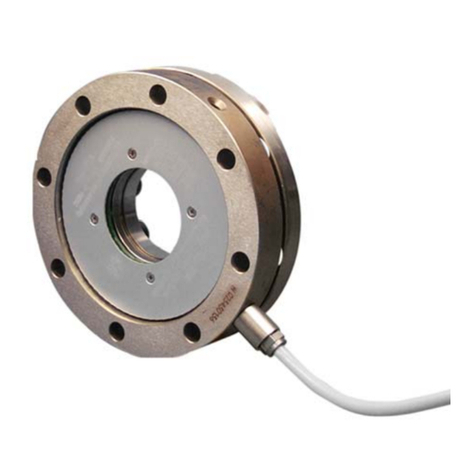
HBM
HBM TB1A Mounting instructions
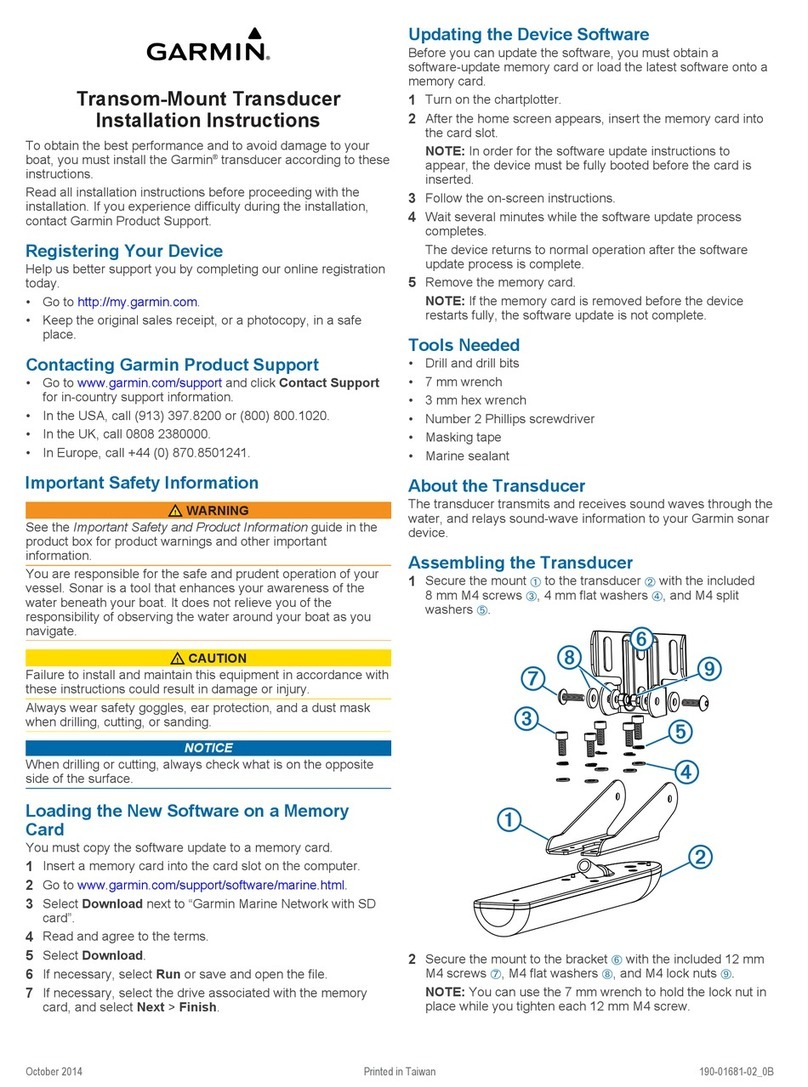
Garmin
Garmin GT30-TM installation instructions

Trimec
Trimec DUALPULSE 490 instruction manual
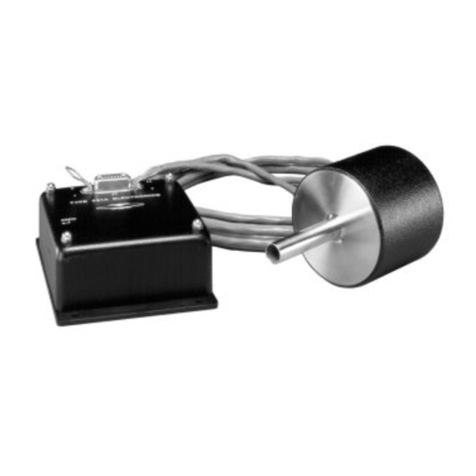
MKS
MKS Baratron 121A instruction manual
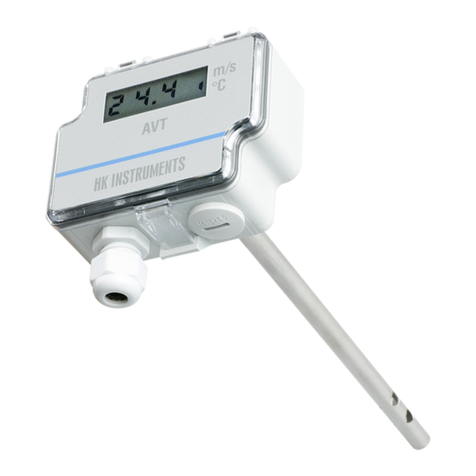
HK Instruments
HK Instruments AVT Series installation instructions
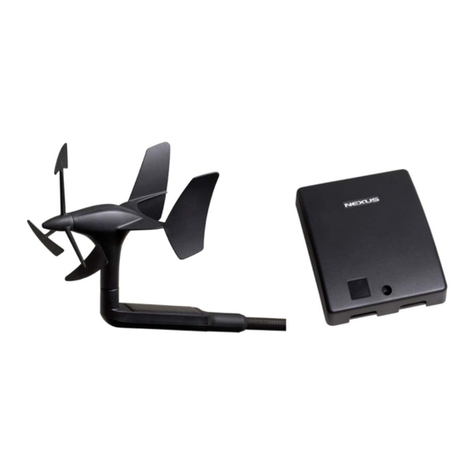
Nexus
Nexus NX Wireless Wind Transducer set Installation and operation manual
